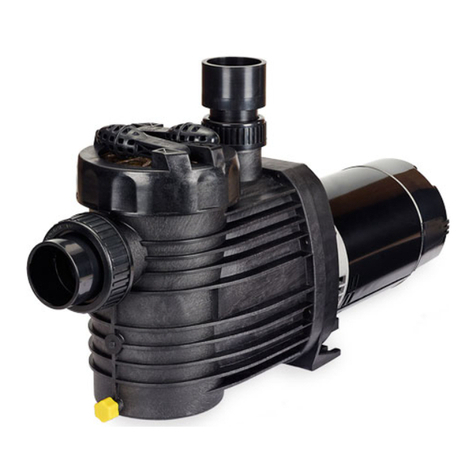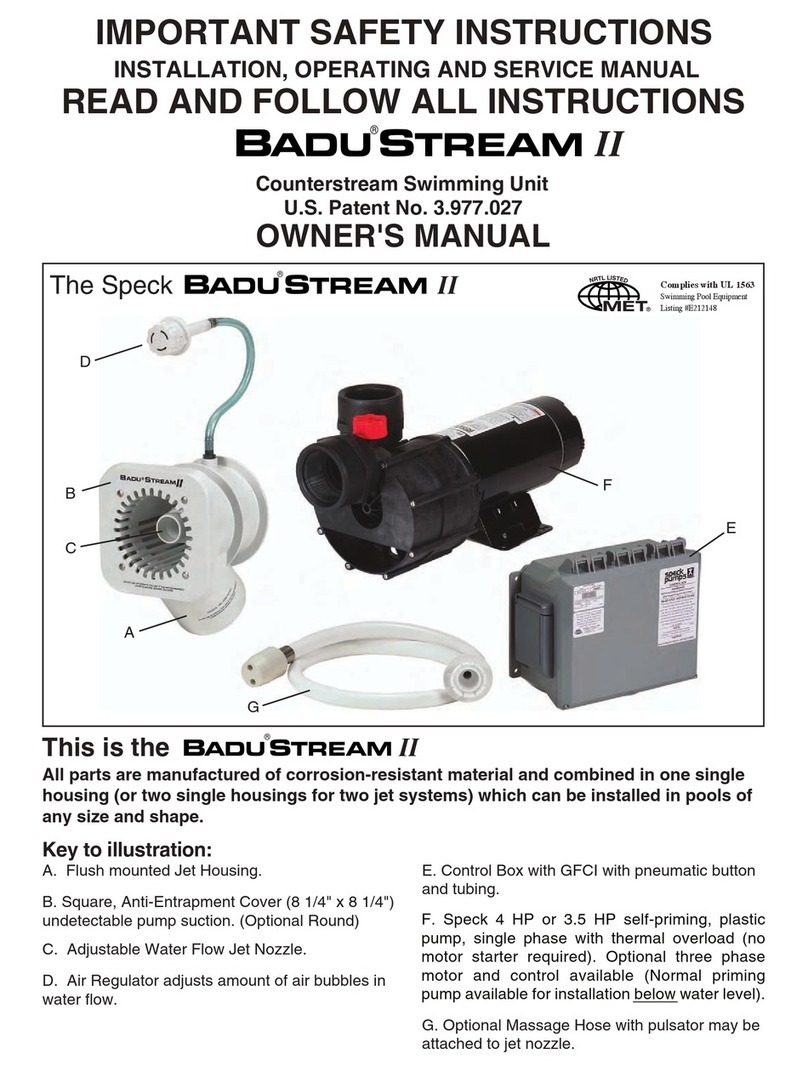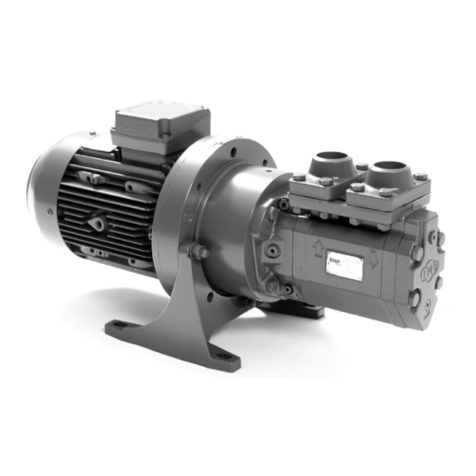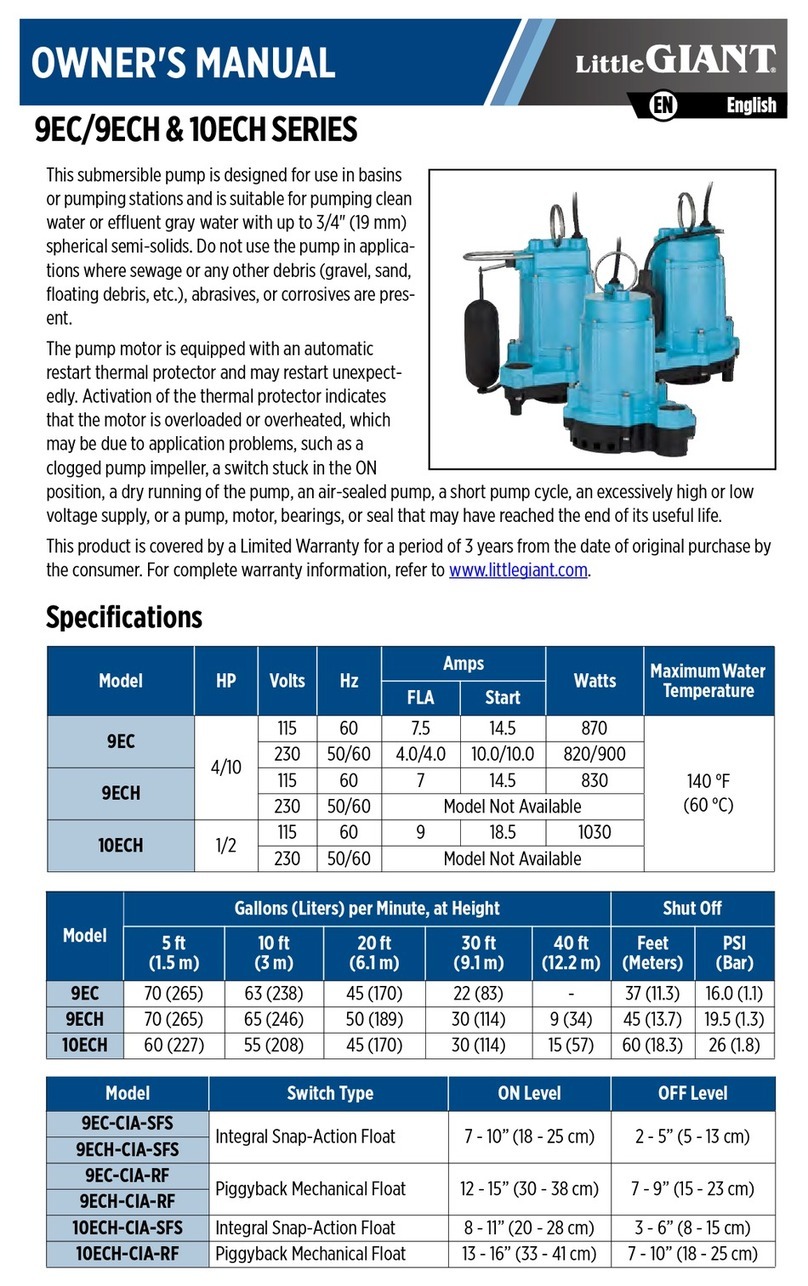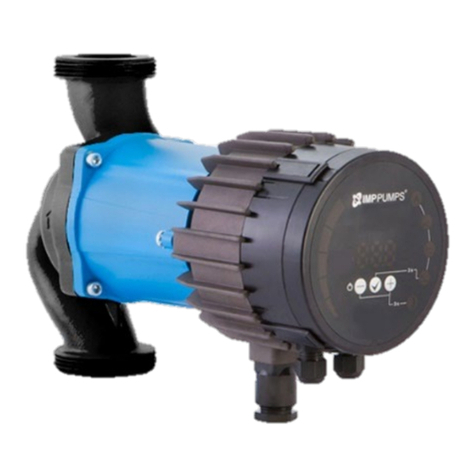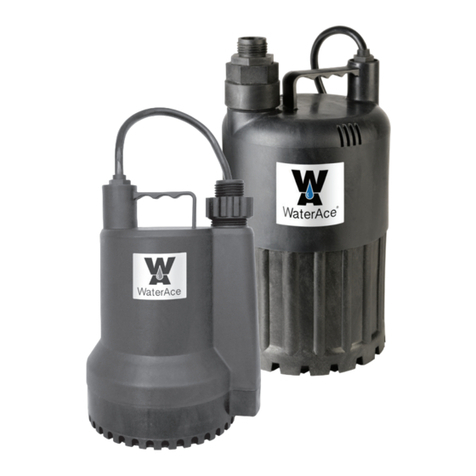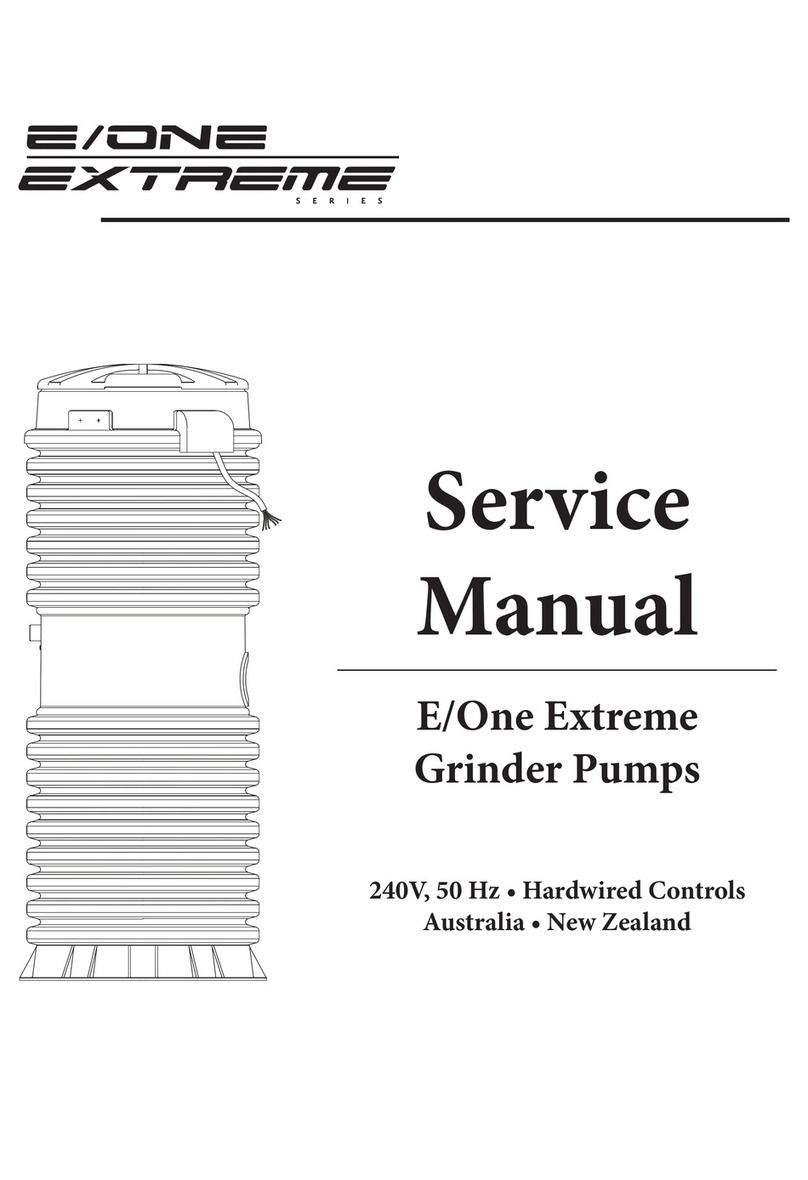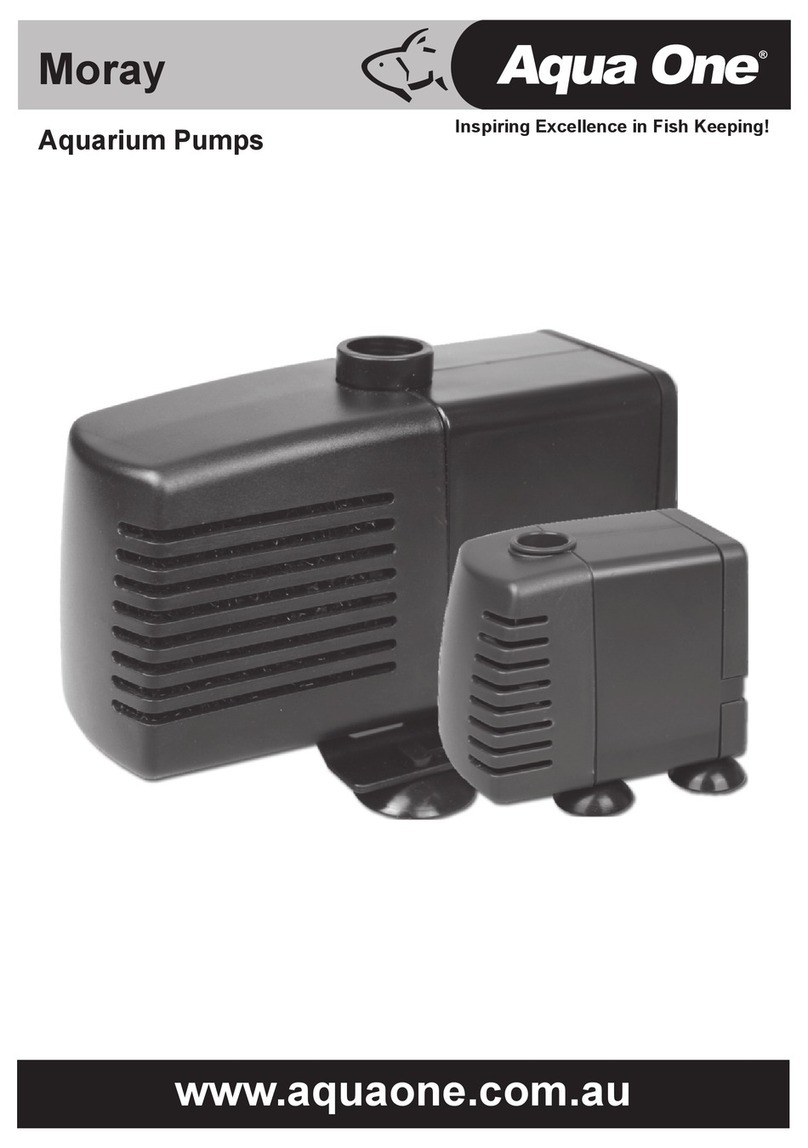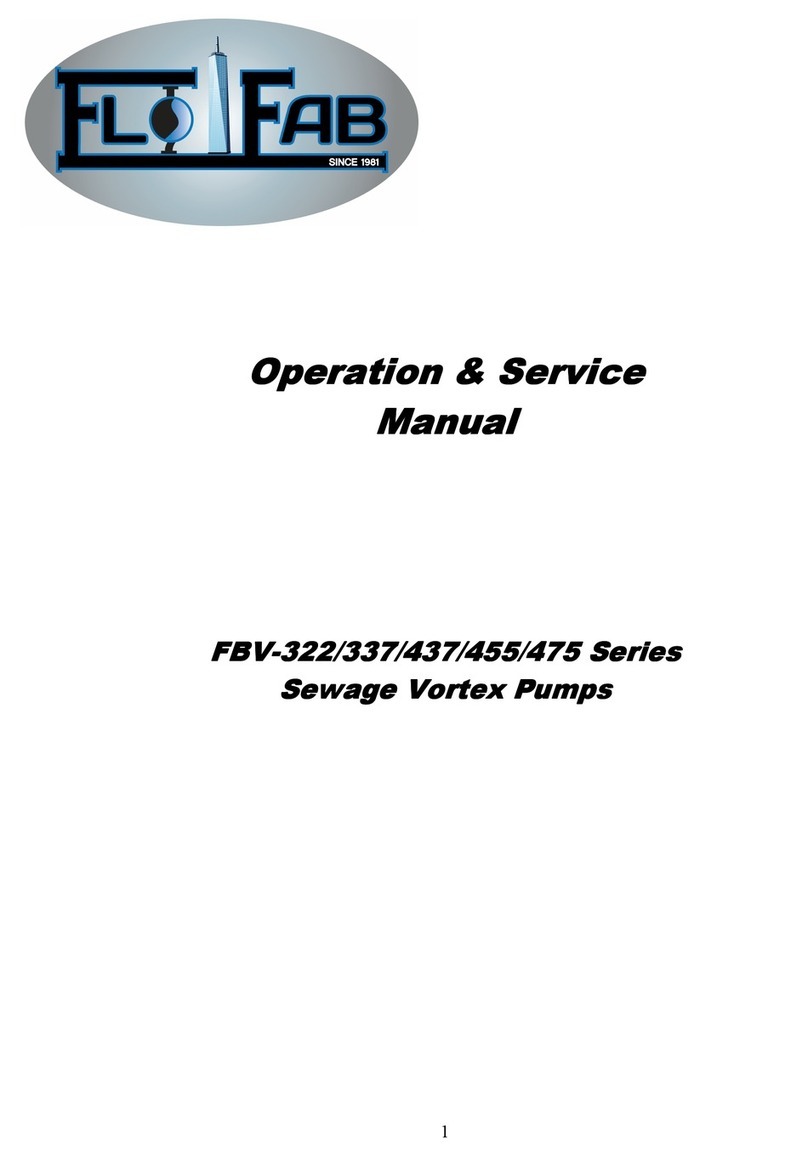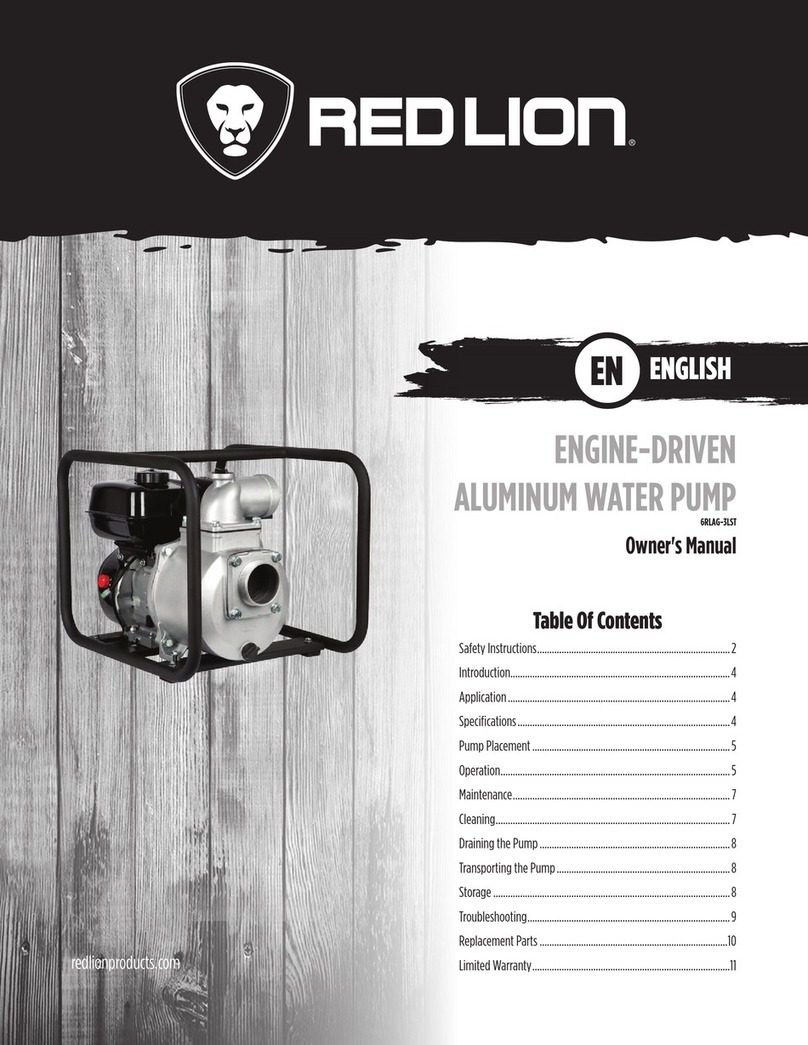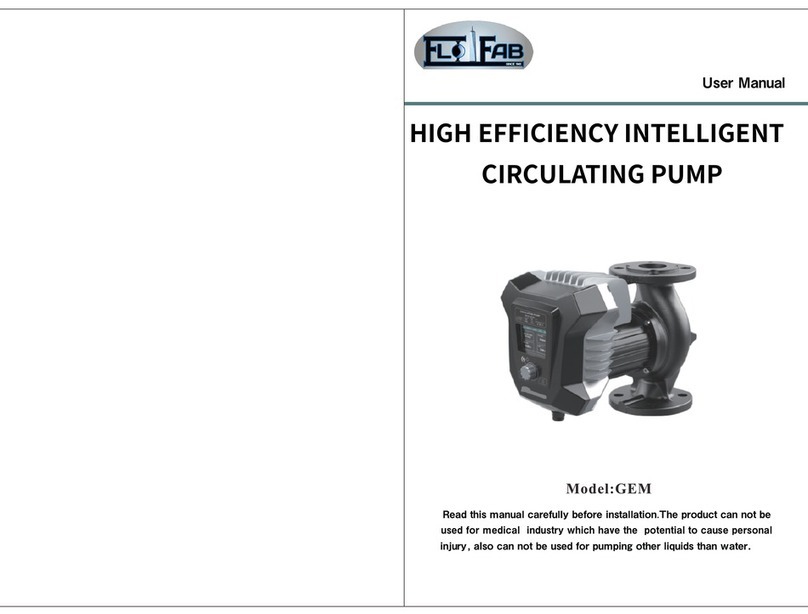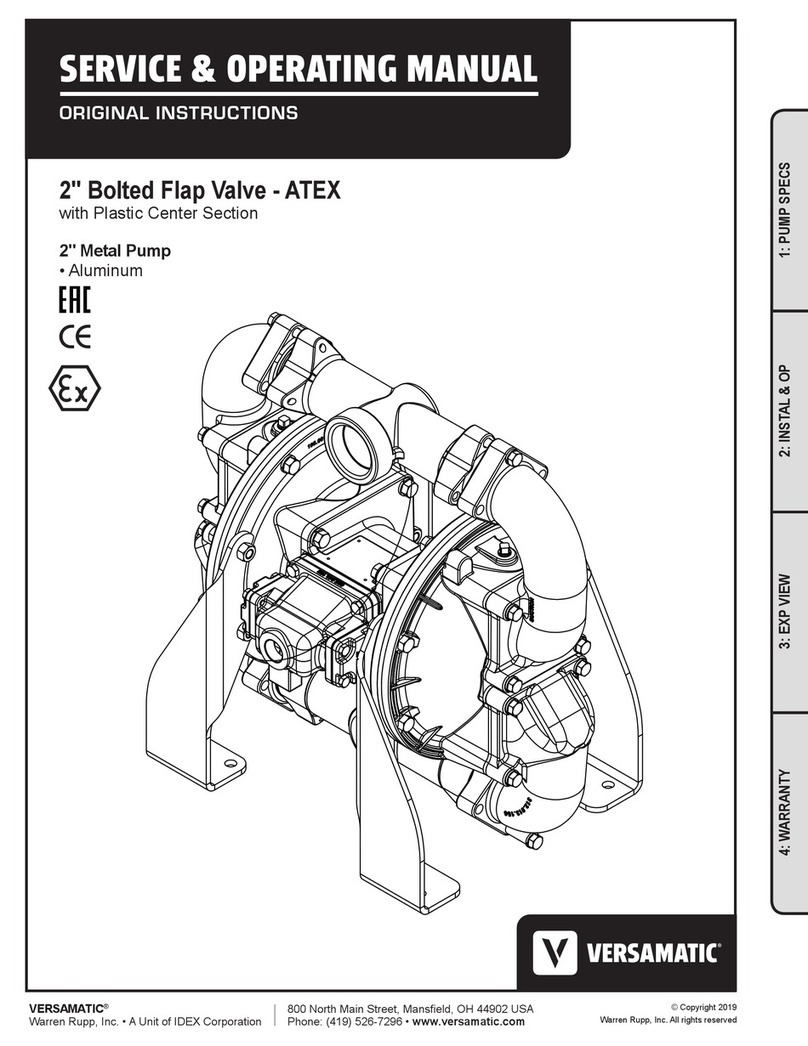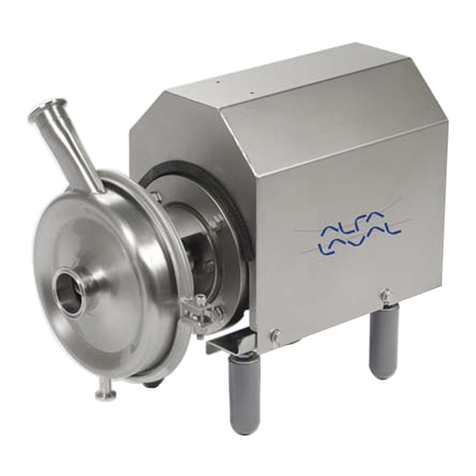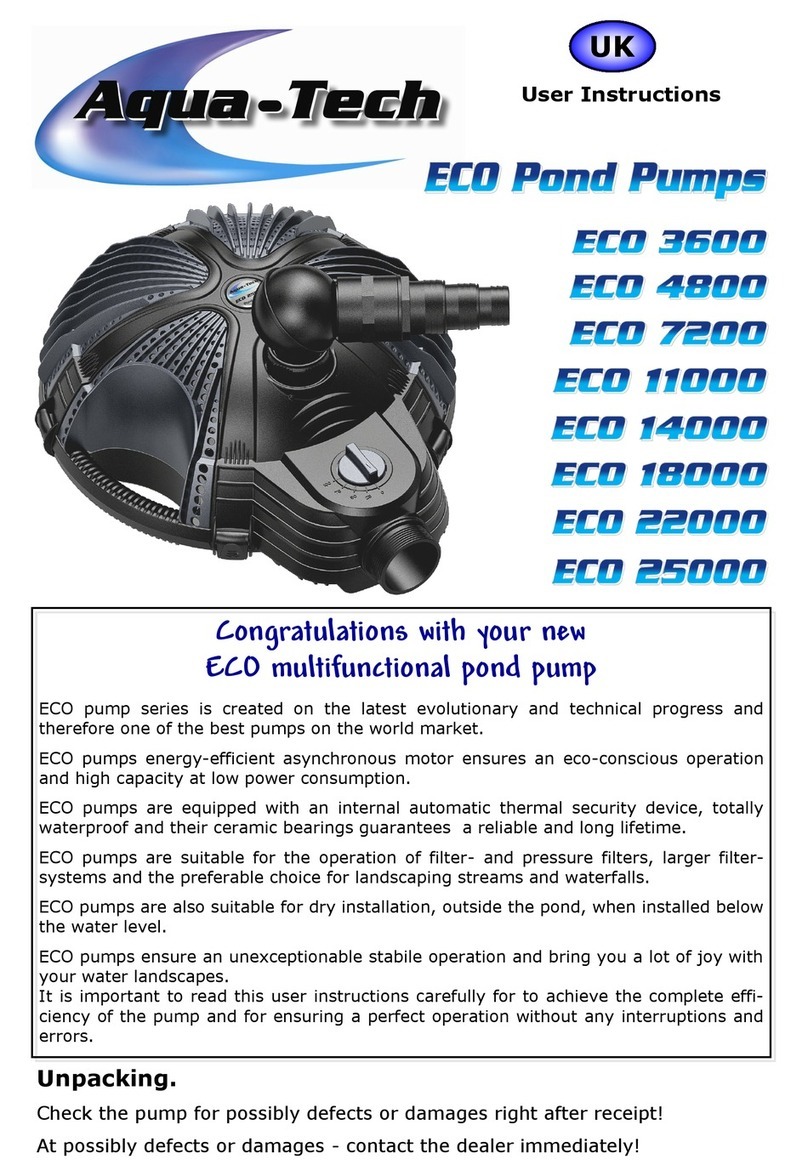Speck pumps 1.1 THP Dual Voltage Series Setup guide

Installation, Operation, and Service Manual
1.1 THP Dual Voltage Series
Variable Speed Pool Pump
Motor Version 2.0
02/2019

2999999406 - Rev. 0419 DY.250.JP
Date of Installation:
Installed by:
Serial Number:
For Service Call:
Technical Support:
Address: Speck Pumps
8125 Bayberry Road
Jacksonville, FL. 32256
USA
Hours: (Monday - Friday) 8:00 am to 5:00 pm EST
Toll Free: 800-223-8538
Phone: 904-739-2626
Fax: 904-737-5261
Website: www.usa.speck-pumps.com
Manufactured by Speck Pumps, Jacksonville Florida USA, ©2019 All Rights Reserved.
This document is subject to change without notice.

Table of Contents
1 Important Safety Instructions 4
SwimJet Combination Fitting Manufacturers Warnings. . 4
General Safety Instructions. . . . . . . . . . . . . . 5
2 General Description 6
3 Installation Information 7
Preparation Guide . . . . . . . . . . . . . . . . . . 7
Pump Location . . . . . . . . . . . . . . . . . . . 7
Pipe Sizing . . . . . . . . . . . . . . . . . . . . . 7
Plumbing Installation . . . . . . . . . . . . . . . . 8
Bonding and Grounding . . . . . . . . . . . . . . . 8
Electrical Installation . . . . . . . . . . . . . . . . 8
Voltage Checks . . . . . . . . . . . . . . . . . . . 9
Pressure Testing . . . . . . . . . . . . . . . . . . 9
4 Operation 10
Start-Up guide . . . . . . . . . . . . . . . . . . . 10
Enter Programming Mode . . . . . . . . . . . . . . 11
Schedule (SCHE) Menu . . . . . . . . . . . . . . .12
Override (OVRD) Menu . . . . . . . . . . . . . . .13
Priming (PR) Menu . . . . . . . . . . . . . . . . . 13
Normal Operation . . . . . . . . . . . . . . . . . . 14
User Interface Lockout . . . . . . . . . . . . . . .15
5 Service and Maintenance 15
Routine Maintenance . . . . . . . . . . . . . . . . 15
Winterizing . . . . . . . . . . . . . . . . . . . . . 16
6 Troubleshooting 17
Controller Errors . . . . . . . . . . . . . . . . . .17
General Pump Troubleshooting . . . . . . . . . . . . 18
Blocked Impeller . . . . . . . . . . . . . . . . . . 18
Mechanical Seal . . . . . . . . . . . . . . . . . .18
Motor Replacement . . . . . . . . . . . . . . . . . 20
7 Product Specification 21
Dimensional Drawings & Performance Curves . . . . . 21
Replacement Parts and Exploded View . . . . . . . . 22
8 Limited Warranty 25

4
WARNING: Before Installing this product, read and follow all warning notices and instructions which are included.
Failure to follow safety warnings and instructions can result in severe injury, death, or property damage. Call
(800) 223-8538 or visit www.usa.speck-pumps.com for additional copies of these instructions.
1 Important Safety Instructions
Important Notice:
This manual contains important information about the installation, operation and safe use of this product. This
information should be given to the owner and/or operator of this equipment.
WARNING: This product must be installed and serviced by a qualified pool professional, and must conform to all
national, state, and local codes.
WARNING: Before Installing this product, read and follow all warning notices and instructions which are included.
Failure to follow safety warnings and instructions can result in severe injury, death, or property damage. Call
1-800-223-8538 or visit www.usa.speck-pumps.com for additional copies of these instructions.
When installing and using this electrical equipment, basic safety precautions should always be followed,
including the following:
READ AND FOLLOW ALL INSTRUCTIONS
WARNING: To reduce the risk of injury, do not permit children to use this product unless they are closely
supervised at all times.
WARNING: Risk of Electrical Shock. Connect only to a grounding type receptacle protected by a ground-fault
circuit-interrupter (GFCI). Contact a qualified electrician if you cannot verify that the receptacle is protected by
a GFCI.
The unit must be connected only to a supply circuit that is protected by a ground-fault circuit-interrupter (GFCI).
Such a GFCI should be provided by the installer and should be tested on a routine basis. To test the GFCI, push
the test button. The GFCI should interrupt power. Push the reset button. Power should be restored. If the GFCI
fails to operate in this manner, the GFCI is defective. If the GFCI interrupts power to the pump without the test
button being pushed, a ground current is flowing, indicating the possibility of an electric shock. Do not use this
pump. Disconnect the pump and have the problem corrected by a qualified service representative before using.
CAUTION: This pump is for use with permanently installed pools and may also be used with hot tubs and spas if
so marked. Do not use with storable pools. A permanently installed pool is constructed in or on the ground or in
a building such that it cannot be readily disassembled for storage. A storable pool is constructed so that it may
be readily disassembled for storage and reassembled to its original integrity.
TO REDUCE THE RISK OF ELECTRICAL SHOCK, connect ground wires to grounding screw located in the motor.
Use no smaller than a #12 AWG (3.3mm2) wire.
TO REDUCE THE RISK OF ELECTRICAL SHOCK, a bonding connector is provided for bonding to metal water
pipes, metal rails, or other metal within 5 feet of the swimming pool. All local points should be bonded with a #8
AWG (8.4mm2) wire.
SAVE THESE INSTRUCTIONS.

5
F
General Safety Instructions
The following guidelines provide information to minimize the risk of injury to users of
pools, spas, and hot tubs.
WARNING: TO REDUCE THE RISK OF ENTRAPMENT HAZARD
Pool and spa pumps produce high levels of suction, which can pose extreme danger if a person comes in close
proximity to an open pool or spa drain or if a drain cover is loose, cracked, broken or missing. Pool and spa pumps
move large volumes of water, which can pose extreme danger if a person’s hair comes in close proximity to a
drain that is not the proper size for the pump or pumps.
If not an approved single, unblockable outlet, a minimum of two functioning suction outlets per pump must be
installed. Suction outlets in the same plane (i.e. floor or wall) must be installed a minimum of three (3) feet (1
meter) apart, as measured from center point to center point. Dual suction fittings shall not be located on seating
areas or on the backrest for such seating areas. If any suction outlets are located closer they shall be located on
two dierent planes (i.e. one on the bottom and one on the vertical wall, or one each on two separate vertical
walls).
WARNING: Failure to keep suction outlet components clear of debris, such as leaves, dirt, hair, paper and other
material can result in an increased potential for suction entrapment.
If not a single, unblockable outlet, in the event of one suction outlet being completely blocked, the remaining
suction outlets serving the system shall have a flow rating capable of the full flow of the pump(s) or the specific
suction system. If in doubt about the rating and/or head loss curve of your system, consult a qualified pool or
spa professional and/or your respective equipment manufacturer(s). Also, double check with your local building/
health authorities regarding single vs. multiple drain installations, etc.
Regularly inspect all drain covers for cracks, damage and advanced weathering. If a drain cover becomes loose,
cracked, damaged, broken or is missing, close the pool or spa immediately, post a notice and keep the pool or spa
closed until an appropriate VGB 2008 certified drain cover is properly installed.
WATER VELOCITY AND FLOW RATES
The maximum water velocity through drain covers is limited by some local regulations, for example some state
health departments limit the velocity through public pool drain covers to 1.5 feet per second. This velocity limit
is lower than the flow rating provided by the ANSI/APSP 16 certification; therefore local limit applies and must
be followed. Never exceed the flow rating listed on the cover even if local code does not provide a velocity limit.
For additional information on proper installation refer to The Association of Pool & Spa Professionals ANSI/APSP-
7 Standard and the US Consumer Product Safety Commission Guidelines for Entrapment Hazard.

6
Figure 1
The ES90-II VSP, E71-II VHV, and A91-II VSP family of variable speed swimming pool pumps are both environmentally friendly
and cost ecient. These pumps have three (3) adjustable power levels which provide the pool owner a simple three button
control, greatly reducing the operating cost at a reasonable investment. The high performance, medium head pumps use a
state of the art axial flux permanent magnet brushless-DC motor controlled by advance logic electronics - providing cooler
and quieter operation at a fraction of the cost of a standard PSC motor.
The motor runs on a 24-hour schedule, and operates by keeping the power used by the pump at a constant power level
selected by the user. This is especially useful at lower speeds because as the filter gets dirty and pressure increases, the
pump will automatically pick up a little speed to keep the programmed power level the same. This allows for longer periods
of time before the filter needs to be cleaned, and the user knows exactly how much power the pump is using. In addition, the
motor automatically detects either 115V or 230V power without the need for rewiring or a voltage switch.
Ideally suited for pools up to 36,000 gallons (24 hour operation), the pumps operate at maximum system flow of 85- 100
gallons per minute (GPM) at 1000 watts (2850-3500 RPM). The maximum flow rate and RPM are dependant on the pump
model and installation. The pumps can operate from 10 watts (400-600 RPM) to 1000 watts (2850-3500 RPM) in increments
of 10 watts. This allows you to select the most appropriate power level for your application. These variable speed pumps
are designed to meet the needs of today’s more environmentally friendly consumer. The pump parts are made of 100%
recyclable “environment friendly“ plastic.
The user interface provides manual power level controls for the pump. There are three fixed power level buttons that can be
selected 1, 2, and 3. (See Figure 1)
2 General Description
Controls and LEDs Description
1) Power Level Display Displays the current motor power level, or error code.
2) Button Used to enter programming mode (press and hold for
at least 3 seconds).
3) Button Used to select fixed power level 1 or to decrease
power level when in programming mode.
4) Button
Used to start the pump from the OFF position or
to confirm/save parameters when in programming
mode.
5) Button Used to select fixed power level 3 or to increase
speed when in programming mode
6) Button Used to stop the motor.
7) Power LED The green LED indicates the unit has power.
8) Error LED The red LED indicates there is a fault.
ERRORPOWER
SET
OK
0
321
(1)
(2)
(3)
(4)
(5)
(6)
(7)
(8)
General Safety Instructions - continued
OK
2
1
ERROR
3
SET
0
Pool pump must be installed by a licensed or certified electrician or a qualified
pool serviceman in accordance with the National Electrical Code and all applicable
local codes and ordinances. Improper installation will create an electric hazard
which could result in death or serious injury to pool users, installers, or others
due to electrical shock, and may also cause damage to property.
Always disconnect power to the pool pump at the circuit breaker before
servicing the pump. Failure to do so could result in death or serious injury to
serviceman, pool users, or others due to electric shock.
WARNING - Risk of Electrical Shock or Electrocution

7
3 Installation Information
Preparation Guide
1. Upon receipt of the pump, check the carton for damage. Open the carton and check the pump for concealed damage, such
as cracks, dents, or a broken base. If damage is found, contact the shipper or distributor where the pump was purchased.
2. Inspect the contents of the carton and verify that all parts are included. See Section 7, Parts List and Exploded View for
details.
NOTE: In Canada, the pump must be located a minimum of three (3) meters (approximately ten (10) feet) from the water
(CSA C22.1).
1. For trouble-free self-priming, install the pump as close to the pool as practical. Consult local codes for minimum distance
between pool and pump.
WARNING: Some Safety Vacuum Release System (SVRS) devices are not compatible with the installation of check valves. If
the pool has an SVRS device, be sure to confirm that it will continue to safely operate if check valves are installed.
2. The piping should be as direct and free from turns or bends as possible, as elbows and others fittings greatly increase
friction losses which reduce the flow of water.
3. Place pump on solid foundation which provides a rigid and vibration-free support so that it is readily accessible for service
and maintenance.
4. Install the pump in a well ventilated location protected from direct sunlight and excessive moisture. (rain, sprinklers, etc.)
5. Protect the pump against flooding and excess moisture, and prevent foreign objects from clogging air circulation around
motor. All motors generate heat that must be removed by providing proper ventilation.
6. DO NOT store or use gasoline or other flammable vapors or liquids in the vicinity of this pump. DO NOT store pool chemicals
near the pump.
7. DO NOT remove any safety alert labels such as DANGER, WARNING, or CAUTION. Keep safety labels in good condition
and replace any missing or damaged labels.
8. Provide access for future services by leaving a clear area around the pump. Allow plenty of space above the pump to
remove lid and basket for cleaning.
Pump Location
Pipe Sizing
NOTE: All pipe sizes are able to withstand the pressures the pump will deliver, but not necessarily the flow. If the pipe is too
small for the pump, or is elevated above water, the maximum gallons per minute (GPM) may not be delivered. If this happens,
the pump will develop a pocket of air (cavitation) that makes noise. This may shorten the life of the pump.
SUCTION & DISCHARGE:
When the pump is located up to 50 feet from the pool, the recommended minimum pipe size for both the suction and discharge
is 2” on the ES90-II VSP. On the A91-II VSP and E71-II VHV, the minimum pipe size for both suction and discharge is 1.5”.

8
Bonding and Grounding
When installing and using the motor, basic safety precautions should always be followed. The wiring of the motor should be
done by a licensed electrician in accordance with local codes.
BONDING AND GROUNDING
1. The motor frame must be grounded to a reliable grounding point using a solid copper conductor, No. 8 AWG or larger. In
Canada, No. 6 AWG or larger must be used. If the pump is installed within five (5) feet of the inside walls of the swimming
pool, spa, or hot tub, the motor frame must be bonded to all metal parts of the swimming pool, spa, or hot tub structure and
to all electrical equipment, metal conduit, and metal piping within five (5) feet of the inside walls of the swimming pool, spa,
or hot tub.
2. Bond the motor using the provided external lug.
WARNING: Always disconnect the power source before working on a motor or its connected load.
WARNING: In order to avoid the risk of property damage, severe personal injury, and/or death, make sure that the control
switch, time clock, or control system is installed in an accessible location, so that in the event of an equipment failure or
loose plumbing fitting, the equipment can be easily turned o.
CAUTION: The pump must be permanently connected to a dedicated electrical circuit. No other equipment, lights, appliances,
or outlets may be connected to the pump circuit, with the exception of devices that may be required to operate simultaneously
with the pump, such as a chlorinating device or heater.
WARNING: Motor is fitted with internal auto reset. May restart without warning!
Plumbing Installation
1. When connecting pipework to pump with threaded ports, it is recommended that thread seal tape be used. Hard-plumbed
pipes must have proper solvent-weld connections. Flexible hose connections must be tightened properly. If the suction line
is not sealed correctly, the pump will not prime properly and will pump small volumes of water or none at all.
2. When installing the pump, care should be taken to see the suction line is below water level to a point immediately beneath
the pump to ensure quick priming via a flooded suction line. The height between the pump and water level should not be
more than five (5) feet. NOTE: The E71-II VHV is NOT self-priming and must be installed below water level.
3. Suction and discharge lines should be independently supported at a point near the pump to avoid strains being placed on
the pump. Always use properly sized valves.
4. When installing the pump below water level, it is advisable to install a gate valve in both the suction and discharge line in
the event that the pump must be removed for servicing.
5. Before starting the pump for the first time, remove the see-through lid. (Turn lid ring counter-clockwise to remove.) Fill
strainer tank with water until it is level with the suction inlet. Replace lid with locking ring. Hand-tighten the lid to make an
air-tight seal. DO NOT use any tools to tighten the lid.
6. Use the fewest number of fittings as possible. Each additional fitting has the eect of moving the equipment farther away
from the water. NOTE: If more than ten (10) suction fittings are needed, the pipe size must be increased.
Electrical Installation
1. The pump motor must be securely grounded inside the motor control box. (See Figure 2)
NOTE: DO NOT connect to electric power supply until unit is permanently grounded.
2. Wire size must be adequate to minimize voltage drop during the start-up and operation of the pump. See Table 1.0 for
recommended wiring sizes.

9
Table 1.0
4. Remove the four screws holding the top control enclosure onto
the motor. Carefully lift the top panel and turn it over to expose the
inside terminal box. (See Figure 2)
5. The terminal box is supplied with a 1/2” -14 NPT threaded hole.
Use only liquid tight fittings in order to protect the electronics and
the motor. CAUTION: Failure to use liquid tight fittings will void the
warranty.
6. Connect L1, L2/N, and Ground to the terminal block as shown in
Figure 2.
7. Carefully fold all wires inside the terminal box and place the top
control panel back on top of the terminal box.
8. Tighten the four screws into the terminal box while applying light
pressure to the top control enclosure. DO NOT OVER TIGHTEN.
Electrical Installation - continued
3. Insulate all connections carefully to prevent grounding or short-circuits. Sharp edges on terminals require extra protection.
To prevent the wire nuts from loosening, tape them using suitable, listed (UL, ETL, CSA) electrical insulating tape. For safety,
and to prevent entry of contaminants, reinstall all conduit and terminal box covers. Do not force connections into the conduit
box.
Figure 2
L1
L2/N
Ground
Internal Motor Ground
(Connected at Factory)
The correct voltage, as specified on the pump data plate, is necessary for proper performance and long motor life. Incorrect
voltage will cause the error light to turn on and cause damage to the motor if not turned o immediately.
It is the responsibility of the electrical installer to provide data plate operating voltage to the pump by ensuring proper circuit
sizes and wire sizes for this specific application.
CAUTION: Failure to provide data plate voltage during operation will cause the motor to overheat and void the warranty.
Voltage Checks
Pressure Test
WARNING: When pressure testing a system with water, air is often trapped in the system during the filling process. This air
will compress when the system is pressurized. Should the system fail, this trapped air can propel debris at a high speed and
cause injury. Every eort to remove trapped air must be taken, including opening the bleed valve on the filter and loosening
the pump basket lid while filling the pump.
WARNING: Trapped air in the system can cause the filter lid to be blown o, which can result in death, serious injury, or
property damage. Be sure all air is properly purged out of the system before operating. DO NOT USE COMPRESSED AIR TO
PRESSURE TEST OR CHECK FOR LEAKS.
WARNING: When pressure testing the system with water, it is very important to make sure that the pump basket and lid is
completely secure.
Recommended Wire Sizes
Distance from Sub-panel 0 - 50 Feet 50 - 100 Feet 100 - 150 Feet
Voltage 115 / 230 VAC 115 / 230 VAC 115 / 230 VAC
Minimum Wire Size (AWG) 12 / 14 10 / 12 8 / 10

10
Pressure Test - continued
STEPS:
1. Fill the system with water, using care to eliminate trapped air.
2. Pressurize the system with water to no more than 35 PSI.
WARNING: DO NOT pressure test above 35 PSI. Pressure testing must be done by a trained pool professional. Circulation
equipment that is not tested properly might fail, which would result in severe injury or property damage.
3. Close the valve to trap pressurized water in the system.
4. Observe the system for leaks and/or pressure decay.
5. If there are leaks, repeat Steps 1 -3. For technical support, call 800-223-8538. If calling from outside the U.S. dial +1
904-739-2626.
CAUTION: Never run the pump without water. Running the pump “dry” for any length of time can cause severe damage to
both the pump and the motor and will void the warranty.
If this is a new pool installation, make sure all piping is clear of construction debris and has been properly pressure tested.
The filter should be checked for proper installation, verifying that all connections and clamps are secure according to the
manufacturer’s recommendations.
WARNING: To avoid risk of property damage, severe personal injury or death, verify that all power is turned o before
starting this procedure.
1. Release all pressure from the system and open the filter pressure release valve.
2. Depending on the location of the pump, do one of the following:
4 Operation
Start Up Guide
If the pump is located below the water level of the pool, open the filter pressure valve to prime the pump with
water.
If the pump is located above the water level of the pool, remove the lid and fill the basket with water before
starting the pump.
3. Prior to replacing the lid, check for debris around the lid o-ring seat. Debris around the lid o-ring seat will make it dicult
to prime the pump.
4. Hand-tighten the lid to make an air tight seal. DO NOT use any tools to tighten the lid: hand-tighten only. Make sure all
valves are open and the unions are tight.
5. Once all the air has left the filter, close the pressure release valve.
6. Switch on power to the pump-motor. When turning on for the first time, it will be in the stopped position (OFF shown on
display). Press the OK button to start the pump and it will begin running on the 24-hour schedule.
7. The pump will run through the priming cycle when you first start the 24-hour scheudle. Default priming cycle is 2 minutes
at 1000 watts (2850-3500 RPM). Priming power level is adjustable from 10 watts (400-600 RPM) to 1000 watts (2850-
3500 RPM) in increments of 10 watts, and priming time is adjustable from 0-10 minutes in 1 minute increments.
n
n

11
Start Up Guide - continued
Prime Sequence: If full prime has not been achieved after prime cycle (max. 10 minutes), press the “0” button to stop the
pump. Refill the pump with water and restart. Allow the pump to run for up to 10 minutes to allow air trapped in the suction
line to be purged.
8. The pump has three (3) adjustable power level settings (S1, S2, S3) that run on a 24-hour cycle, starting with S1. Each
setting can be adjust for power level (0-1000 Watts) and duration (0-24 hours). NOTE: The total duration for S1 + S2+ S3
must be equal to or less than 24 hours.
Default Factory Schedule:
S1: 200W; 12 hours
S2: 0W; 0 hours
S3: 0W; 0 hours
9. If the power is turned o or the pump is stopped using the “0” button, it will repeat the programmed priming cycle and start
from the beginning of the 24-hour cycle (S1) upon restart.
10. If the pump does not prime and all the instructions to this point have been followed, check for a suction leak. If there is a
leak repeat Steps 2 through 6. NOTE: It is normal for a few drops of water to escape from the mechanical seal from time to
time. This is especially true during the break-in period. (Refer to section 5.2 - Mechanical Seal on page 16).
11. For technical support, call 800-223-8538. If calling from outside the U.S. dial +1 904-739-2626.
Enter Programming Mode
1. To enter programming mode, the pump must be in the stopped position. If the pump is running, press the button. OFF
will be shown on the LED display and the green Power LED will flash. See Figure 3.
ERRORPOWER
SET
OK
0
321
oFF
Figure 3 - OFF Shown On Display
0
2. Press and hold the button for at least three (3) seconds. SCHE will begin flashing on the LED display. See Figure 4.
SET
ERRORPOWER
SET
OK
0
321
SCHE
ERRORPOWER
SET
OK
0
321
oUAO
ERRORPOWER
SET
OK
0
321
PA
Figure 4 - SCHE Shown on Display
3. Use the and buttons to toggle between SCHE (schedule menu), OVRD (override menu), and PR (prime menu). Once
you have selected the menu you wish to enter, press the button.
1
ERROR
3
OK
2

12
Schedule (SCHE) Menu
1. Enter programing mode by pressing and holding the button for at least three (3) seconds when the pump is in the
stopped (OFF) position. Once SCHE begins flashing on the LED display, press the button.
2. After entering the schedule menu, S1 (speed/power level setting 1) flashes on the LED display. Use the and buttons
to select between S1, S2, and S3. Press the button to edit the selected setting. See Figure 5.
OK
2
1
ERROR
3
OK
2
ERRORPOWER
SET
OK
0
321
S 3
ERRORPOWER
SET
OK
0
321
S 2
ERRORPOWER
SET
OK
0
321
S 1
Figure 5 - S1, S2, S3 Shown on Display
3. After selecting S1, S2, or S3 the power level for that setting flashes on the LED display. Use the and buttons to
select the desired power level (Watts). Press the button to save the power level and move on to the duration setting. See
Figure 6.
1
ERROR
3
OK
2
ERRORPOWER
SET
OK
0
321
200
ERRORPOWER
SET
OK
0
321
12
Figure 6 - Power Level (Watts) Setting
4. After saving the power level (watts) setting, the duration (hours) flashes on the LED display. See Figure 7. Use the and
bbuttons to select the desired duration in hours for the current setting. Press the button to save the duration and
return to the speed/power level setting selection.
5. Press the button to return to the programming menu.
1
ERROR
3
OK
2
ERRORPOWER
SET
OK
0
321
200
ERRORPOWER
SET
OK
0
321
12
Figure 7 - Duration (Hours) Setting
Please follow all local/state regulations regarding pool motor and timer speeds settings when choosing the
appropriate speeds.
SET
SET

13
SET
Override (OVRD) Menu
1. Enter programing mode by pressing and holding the button for at least three (3) seconds when the pump is in the
stopped (OFF) position.
2. Use the and buttons to select OVRD. See Figure 8. Press the button to enter the override menu.
1
ERROR
3
OK
2
ERRORPOWER
SET
OK
0
321
SCHE
ERRORPOWER
SET
OK
0
321
oUAO
ERRORPOWER
SET
OK
0
321
PA
Figure 8 - OVRD Shown on Display
3. The duration (hours) for the override feature flashes on the LED display. The factory default setting is two (2) hours. Use
the and buttons to select the desired number of hours for the override feature. The duration can be set between 0
and 24 hours. Press the button to save the override duration and exit the override and programming menus.
To Activate the Override Feature:
First press the button and then the button simultaneously when the pump is running. The pump will ramp up to full
speed (1000 Watts) for the programmed override duration. At the end of the programmed time for the override feature, the
pump will return to the proper place in the 24-hour schedule.
1
ERROR
3
OK
2
SET
ERROR
3
Priming (PR) Menu
1. Enter programming mode by pressing and holding the button for at least three (3) seconds when the pump is in the
stopped (OFF) position.
2. Use the and buttons to select PR. See Figure 9. Press the button to enter the priming menu.
SET
1
ERROR
3
OK
2
ERRORPOWER
SET
OK
0
321
SCHE
ERRORPOWER
SET
OK
0
321
oUAO
ERRORPOWER
SET
OK
0
321
PA
Figure 9 - PR Shown on Display
3. The power level (watts) for the priming cycle flashes on the LED display. The factory default setting is 1000 Watts. Use
the and buttons to select the desired priming power level. Press the button to save and move on to the priming
time.
1
ERROR
3
OK
2

14
Normal Operation
1. To start the pump from the stopped (OFF) position, press the button. The pump will run through the programmed
priming cycle. The priming power level flashes on the LED display and the green LED light above the button flashes during
the priming cycle.
2. Once the priming cycle is complete, the pump will first run on power level setting 1 (S1) for the programmed number of
hours. The power level setting for S1 will be shown on the LED display.
3. After running for the programmed number of hours on S1, the pump automatically changes to S2.
4. After running for the programmed number of hours on S2, the pump automatically changes to S3.
5. After running for the programmed number of hours on S3, and at the end of the 24-cycle, the pump automatically starts
again on S1.
The Factory Default Schedule is:
S1: 200 Watts; 12 Hours
S2: 0 Watts; 0 Hours
S3: 0 Watts; 0 Hours
Under the default schedule, the pump will run at 200W for 12 hours and then remain o for 12 hours every day.
NOTE: The total run time between the three settings (S1 + S2 + S3) must be equal to or less than 24 hours. The
motor will not let the user ave the time settings if the total run time exceeds 24 hours.
NOTE: To save power, the LED display will turn o after three minutes during normal operation.
Power Level
(Watts) Approx. RPM
1000 2850-3500
850 2800-3250
750 2400-3150
650 2300-3000
550 2150-2850
450 2000-2600
350 1850-2450
250 1650-2150
150 1350-1750
50 850-1050
Table 2
Priming (PR) Menu - Continued
4. The priming time now flashes on the LED display. The factory default setting is two (2) minutes. Use the and buttons
to select the desired priming time between zero (0) and ten (10) minutes, in 1-minute increments. Press the button to
save and exit the priming and programming menus.
1
ERROR
3
OK
2
OK
2
1

15
User Interface Lockout
ERRORPOWER
SET
OK
0
321
oFF.
Interface
Lockout
Figure 4
Normal Operation - continued
Routine Maintenance
This pump requires little or no service other than reasonable care and periodic cleaning of the strainer basket. DO NOT strike
basket to clean. When cleaning the basket inspect the lid o-ring for damage and replace if necessary.
1. Inspect the pump basket for debris by looking through the clear pump lid.
2. Turn OFF the power to the pump. If the pump is located below the water level, close isolation valves on the suction and
discharge sides of the pump to prevent back flow of water.
3. Remove any debris, because as the debris accumulates, it will begin to block the flow of water through the pump. Keep the
basket clean and clear to improve the performance of the pump.
4. Turn the lid ring counter-clockwise to remove. Carefully remove the lid and lock ring.
5. Remove the basket and properly dispose of the debris into the trash and rinse out the basket. Check basket for cracks, if
crack is found replace basket.
6. Replace basket back into the pump, align the basket properly with the suction pipe. Then fill with water up to the suction
pipe. Clean the clear lid, o-ring, and sealing surface of the pump of any debris.
7. Replace lid with lid ring. Hand-tighten the lid to make an air-tight seal. DO NOT use any tools to tighten the lid.
5 Service and Maintenance
To stop the pump at any time, press the “0” button. The pump will come to a stop and the LED display will read OFF.
NOTE: If the power is shut o or the pump is stopped using the “0” button, upon restart the pump will run through the
programmed priming cycle and then resume normal operation.
Reset to Factory Default Settings
Verify that the pump is powered ON and the green power LED light is on.
If the pump is running, press the “0” button to stop it.
Press and hold the “SET” button for at least 15 seconds.
The three preset power level LED lights and the POWER LED light will all illuminate simultaneously to indicate that
factory default settings have been restored.
n
n
n
n
n
To lock the user interface, first press the “SET” button then immediately press the
“0” button simultaneously.
When the user interface is locked, there will be a dot “.” in the lower right corner of
the LED display. (See Figure 4)
To unlock the user interface, press the “SET” button and “0” button in the same
sequence as described above.
n
n
n
The user interface can be locked to prevent unauthorized programming modifications:

16
Routine Maintenance - continued
8. Verify that all valves have been returned to the proper position for normal operation. Turn ON the power to the pump.
NOTE: It is normal for a few drops of water to escape from the mechanical seal from time to time. This is especially true
during the break-in period.
The mechanical seal may become worn or loose over the course of time, depending on the running time and water quality.
If water continually leaks out, a new mechanical seal should be fitted. After long periods of no operation (seasonal storage,
etc.), the pump must be checked for ease of rotation while it is switched o. Detailed instructions for removing and replacing
the mechanical seal begin on page 16.
WARNING: Before servicing the pump, switch o the circuit breakers at the power source. Severe personal injury or death
may occur if the pump starts while your hand is inside the pump.
CAUTION: The pump must be protected when freezing temperatures are expected. Allowing the pump to freeze will cause
severe damage and void the warranty.
There are two options when winterizing the pump
Option 1:
1. Drain all the water from the pump, system equipment, and piping.
2. Remove drain plugs. DO NOT replace plugs. Store the plugs in the empty strainer basket for winter.
3. Keep the motor covered and dry.
Option 2:
1. Drain all the water from the pump, system equipment, and piping.
2. Remove the pump and motor from the plumbing and store indoors in a warm and dry location.
NOTE: When the winter season is over the pump will need to be check and primed prior to start. Refer to Section 4 Operation,
Start Up Guide.
CAUTION: DO NOT run the pump dry. If the pump is run dry, the mechanical seal will be damaged and the pump will start to
leak at the seal. If this occurs, the mechanical seal will need to be replaced. ALWAYS maintain the proper water level in your
pool. Continued operation in this manner could cause a loss of pressure, resulting in damage to the pump casing, impeller,
and mechanical seal.
Winterizing

17
Controller Errors
WARNING: The pump must be serviced by a professional service technician qualified in pool/spa installation. The following
procedures must be followed exactly. Improper installation and/or operation can create dangerous electrical hazards, which
can cause high voltage to run through the electrical system. This can cause property damage, serious personal injury, and/
or death. Improper installation and/or operation will void the warranty.
The controller errors are indicated by the red LED and an error code shown in the LED display (See Figure 5). List of error
codes with their descriptions are listed in Table 2.0.
NOTE: In the event that an error code is shown and will not clear, the controller can be ‘rebooted’ by turning power
to the pump OFF and waiting 10 minutes before turning the power back on. If this step does not clear the error
code, contact your pool professional for service.
6 Troubleshooting
Table 2.0
Figure 5
Error Code Error Description
01 DC-link over-voltage
02 DC-link under-voltage
03 DC-link voltage is too low
04 IPM (Intelligent Power Module) over-current software protection
05 IPM (Intelligent Power Module) over-current hardware protection
07 AC input over-voltage
08 AC input under-voltage
10 Electronic thermal overload has tripped
11 Motor speed too high
13 IPM (Intelligent Power Module) temperature too high
16 Motor out of step
17 PFC output DC low voltage
20 Short circuit to ground
21 Motor phase short circuit
22 Output phase lack
31 Communication error with master
41 Current sampling sensor error
42 Inrush current preventing relay error
43 Voltage sensor error, AC voltage and DC voltage do not match
51 IPM (Intelligent Power Module) temperature sensor error
60 Motor rotor locked
61 DSP ROM error
62 DSP RAM error
63 DSP watchdog error
66 Internal communication error
ERRORPOWER
SET
OK
0
321
E05

18
Table 3.0
General Pump Troubleshooting
Blocked Impeller
WARNING: Before servicing the pump, switch o the circuit breakers at the power source. Severe personal injury or death
may occur if the pump starts while your hand is inside the pump.
1. Turn OFF the pump. Switch o the circuit breaker to the pump motor.
2. Remove the pump lid and strainer basket.
3. Look inside pump for debris. Remove any debris found inside.
4. Replace the strainer basket and lid.
5. Switch on the circuit breaker to the pump motor.
6. Turn ON the pump, see if the problem is solved.
7. If the impeller is still blocked with debris and it is not possible to remove the debris using Steps 2 - 4, the pump will need
to be disassembled in order to access the inlet and outlet of the impeller.
Removal and Replacement of the Impeller and/or Mechanical Seal
WARNING: Before servicing the pump, switch o the circuit breakers at the power source. Severe personal injury or death
may occur if the pump starts while your hand is inside the pump.
1. Turn OFF the pump. Switch o the circuit breaker to the pump motor. If you are not replacing the motor, do not disconnect
the electrical wiring.
Problem Possible Cause Solution
1. Pump will not prime. A. Suction air leak
B. No water in pump.
C. Closed valves or blocked lines.
D. Low voltage to motor.
Make sure see-through lid and o-rings are clean
and properly positioned. Hand tighten see-
through lid. Tighten all pipes and fittings on
suction side of pump. Be sure water in pool is
high enough to flow through skimmer.
Make sure strainer tank is full of water.
Open all valves in system. Clean skimmer and
strainer tank. Open pump and check for clogging
of impeller.
Check voltage at motor. If too low, pump will not
run.
2. Motor does not turn A. No power to motor.
B. Pump jammed
Check that all power switches are on. Be sure
fuse or circuit breaker is properly set. Time set
properly? Check motor wiring at terminal.
With power o, turn shaft. It should spin freely.
If not, disassemble and repair.
3. Low flow A. Dirty filter
B. Suction Leak
Back wash filter when filter pressure is high, or
clean cartridges.
See Problem 2

19
Removal and Replacement of the Impeller and/or Mechanical Seal
2. Turn OFF any valves to prevent pool water from reaching the pump. Drain water from the pump by loosening the unions
or removing the drain plugs.
3. Remove the eight (8) screws connecting the pump casing/strainer tank to the flange.
4. Pull the motor and flange/seal housing out from the pump casing/strainer tank. Remove the pump casing o-ring. The
impeller is connected to the motor shaft.
5. Remove the diuser by gently pulling the diuser (the diuser is the cover over the impeller) horizontally until the pins
clear the seal housing. NOTE: Only Model ES90-II VSP and Model E90-II VSP have a diuser.
6. Place a flat head screwdriver through the center hole of the
fan cover and into the screwdriver slot on the motor shaft.
7. While holding the motor shaft, turn the impeller counter-
clockwise.
8. Gently pull the mechanical seal from the impeller shaft noting
the way it was originally installed.
Figure 3
CAUTION: DO NOT damage the ceramic or carbon sealing surfaces of the seal. If the sealing surfaces are damaged, leaks
will occur.
9. Using water with a small amount of dish soap, brush the impeller shaft for ease of assembly.
10. With the carbon side up, push the mechanical onto the impeller shaft and wipe carbon surface with a clean cloth. CAUTION:
DO NOT use grease or lube to install seal. It will damage the seal and cause failure.
11. The ceramic side of the seal can be pushed out from the rear of the seal housing. Please note its position before removing.
12. Using water only, wet the ceramic side of the seal and using your thumbs push into the seal housing. Clean surface with
a clean cloth.
13. Wipe the motor shaft of all debris and apply a single drop of Loc-tite to the motor shaft threads.
14. Install impeller by spinning it clockwise onto the motor shaft. Continue to turn clockwise until the carbon and ceramic
sides make contact and the seal spring slightly compresses.
15. Install the diuser by aligning the diuser pin with the holes in the seal housing and pressing together.
16. Make sure the diuser and casing o-rings are in place and free of debris. Slide the motor flange into the casing.
17. Install the eight casing through bolts and nuts using a cross pattern from side to side and top to bottom. CAUTION: DO
NOT over-tighten.
Pump Seal Housing
Sealing
Surfaces
Rubber Collar
Spring
Assembly
Ceramic Ring
Impeller
Shaft

20
Motor Replacement
WARNING: The pump must serviced by a professional service technician qualified in pool/spa installation. The following
procedures must be followed exactly. Improper installation and/or operation can create dangerous electrical hazards, which
can cause high voltage to run through the electrical system. This can cause property damage, serious personal injury, and/
or death. Improper installation and/or operation will void the warranty.
1. Disconnect the wiring from the side of the motor. (Refer to the Electrical Installation)
2. Remove the eight (8) screws holding the flange/seal housing to the pump casing/strainer tank.
3. Slide the motor and flange/seal housing away from the casing/stainer tank.
4. Remove the diuser by gently pulling the diuser horizontally until the pins are clear from the flange/seal housing.
5. Remove the fan cover (3 Phillips head screws) and place a flat heat screwdriver into the screwdriver slot on the rear of the
motor shaft.
6. While holding the motor shaft, turn the impeller counter-clockwise.
7. Using a 1/4” socket, remove the four thru-bolts from the rear of the motor.
8. Remove one-piece flange/seal housing from the front of the motor.
9. Remove the slinger from the old motor and install on to the new motor.
10. Clean the surfaces of the seal (Refer to the Removal and Replacement of the Impeller and/or Mechanical Seal Section
page 16 steps 9-17).
This manual suits for next models
3
Table of contents
Other Speck pumps Water Pump manuals
